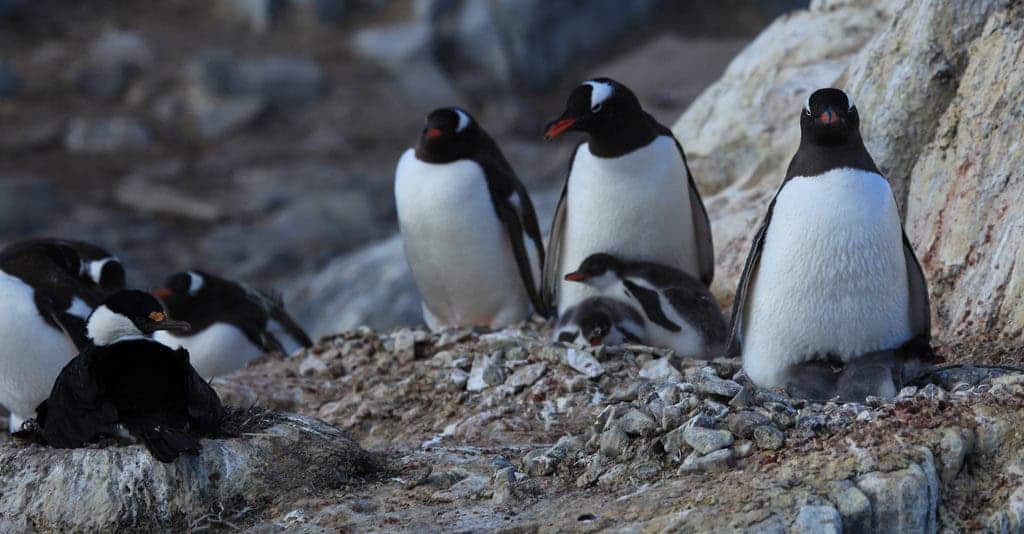Every breeding season, up to 5,000 pairs of gentoo penguins crowd the tiny Ardley Island in the South Shetlands chain just near Antarctica. This has been going on for at least 7,000 years but a group of researchers wanted to study how rising sea levels and changing temperatures affected colony populations in the past to better understand possible outcomes of modern climate change. To their surprise, the biggest disruptor was volcanic eruptions — something which they learned in great detail from an unlikely source: guano.

Gentoo penguins are hard to miss. With their red-orange beaks, white-feather caps, and peach-colored feet, these penguins easily stand out against their favorite bedrock habitat. They’re the third biggest penguins reaching a height of 30 inches (76 centimeters) and a weight of 12 pounds (5.5 kilograms). They might be the biggest poopers in the penguin family, though. Each gentoo excretes 84.5 grams of guano per day, which is almost as much as a human though the bird weighs 15 times less on average. Every breeding cycle, some 139 tons of dry guano are produced on the 1.9-kilometer-long Ardley Island, according to a team led by Dr. Stephen J. Roberts of the British Antarctic Survey.
Roberts and colleagues extracted sediment cores from Ardley Lake, a small lake that sits at the center of the island, to study colony health in the past. Ardley Island is one of the biggest gentoo penguin colonies which made it particularly appealing for research.
Immediately after the researchers extracted the sediments they knew something smelled fishy *cough. Some of the layers smelled differently. Additionally, there were ash and penguin bones embedded in some of these layers which prompted the team to drill in other places such as less populated coastlines along the island.
Based on the percentage of guano found in the sediment sample, the researchers established a record of the penguin population over the last couple thousand years. This analysis revealed wide fluctuations in penguin numbers on Ardley Island.
For at least three times, the nearby Deception Island volcano erupted coinciding with a dramatic fall in penguin numbers. The ash and smoke likely killed some and led all of the penguins to flee to other habitats. And because the landscape became so inhospitable after each eruption, penguin numbers didn’t rebound for 400 years. In one particular case, it took 800 years, the researchers reported in Nature Communications.
The penguins must have been terrified by the eruptions that spewed glass, poisonous gases, and toxic metals, a gruesome scene that reminds one of the sufferings of Pompeii. The last big eruption happened some 3,000 years ago while the 1970s saw the last small but significant eruption. Today, however, the waters around the volcano’s caldera are a lot less menacing. Cruise ships often anchor nearby so passengers can swim in some key spots where the water is warmed by the volcano’s heat, with ice and glaciers in the background.
The findings don’t seem to pose any climate-related consequences, but they do show that, in this particular instance, local events can have a far greater effect on populations than global trends. A volcano eruption like the ones that repeatedly drove the gentoo penguins away from Ardley Island might not be slated for another thousand years but in the meantime, the awkward penguins have other things to worry about. Local pollution and disrupted fisheries are driving the number of some populations down. The gentoo penguin is protected by the Antarctic Treaty of 1959 and received near-threatened status on the IUCN Red List in 2007.



